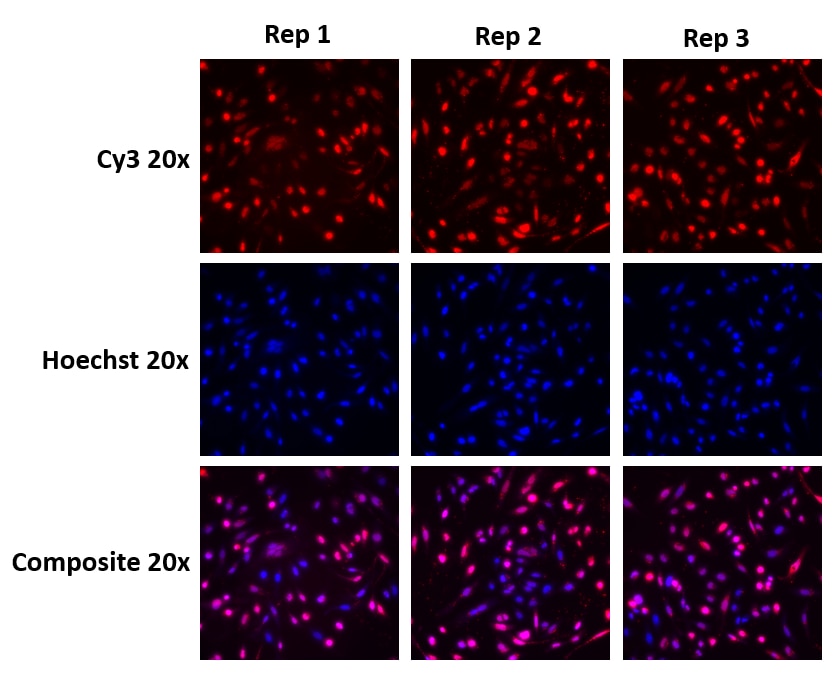miRIDIAN microRNA Hairpin Inhibitor Red Transfection Control
Visualize delivery and optimize transfection conditions with a fluorescently labeled hairpin Inhibitor control
The miRIDIAN microRNA Hairpin Inhibitor Transfection Control is a Cy3-labeled microRNA Hairpin Inhibitor based on the C. elegans miRNA cel-miR-67 (miRIDIAN Hairpin Inhibitor Negative Control #1) for monitoring delivery into human, mouse, and rat cells.


